
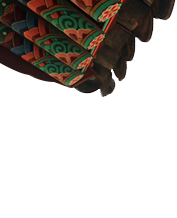
Yeosu was a stronghold of the Chosun navy for 400 years.
Jinnamgwan, a national treasure number 304, was a one-storied wooden building made after the Japanese invasion of Korea in 1592 was over,
so it is a symbol of country-saving and is also a symbol of Yeosu.
The palace Manghaeru of the 2nd floor in front of Jinnamgwan was demolished during the Japanese Empire, but was restored.
It is closed to the public until 2020 for the restoration of Jinnamgwan
Admiral Yi Sun-sin used it as Jeolla Jwasuyeong fortress site
At the place where Jinhaeru was at, the place where Admiral Yi Sun-sin made a Jeolla Jwasuyeong fortress site, Yi Si-eon, a successor to Admiral Yi Sun-sin and also a Jwasusa (government post of Chosun), made a large scale inn of 75 kan in the site where Jinhaeru was burnt during the Japanese invasion of Korea in 1597, and named it Jinnamgwan, with the meaning of making the country peaceful by suppressing the Japanese of the south As a navy focused fortress that has lead the Japanese invasion of Korea in 1592 and 1597 to victory, it has historical quality, and it has the appearance preserved since Jeolla Jwasusa Yi Je-myeon has restored it in 1718 (44th year of King Suk-jong’s rule). The scale of the building was front 15 kan and side 5 kan, with a total building area of 240 pyeong: It is the largest building from the remaining local government office buildings. In Korea, the buildings that are 15 apart for each pillar are, with the exception of Buddhist temples, galleries, servant’s quarters in the palace, and Jungjeon of the Jongmyo Shrine, only Gyeongpango of Hapcheon Haeinsa and Jinnamgwan.
You can also read the explanation of Jinnamgwan. Jinnamgwan has 68 high columns which is supporting the collar beams. The crossbeams are firmly hung on the girders which are connected to the columns. Crossbeams of another simple style are also combined between inner and outer columns. The side blocks of the building have two side beams whose heads are stretching above the girders.The heads of these beams are decorated like dragons. Also there are roof supports on those trapezoid-shaped columns.
The supports are called multiple roof support type, which has two exposed roof support beam ancones outside, and only wing shaped roof support components inside. The ancones for the outside roof support beams are decorated with lotus bud marks. Columns of the central blocks and corner high columns are carved like dragon heads. Each block of the Jinnamgwan has a flower-shaped support component, which gives more space to the building. Jinnamgwan also still maintains its Dancheong, the traditional paintworks on wooden buildings, on the components in and out of the building. To widen the space and increase efficiency of the building, the high columns are shifted to the rear side of the building. Furnitures made of simple and strong materials are also contributing to Jinnamgwan's unique atmosphere.
Built in the early 18th century, Jinnamgwan has significant meaning as it has the two side beams for stability of the building. And it's needless to say the government office is also valuable in historical, academic and artistic aspects
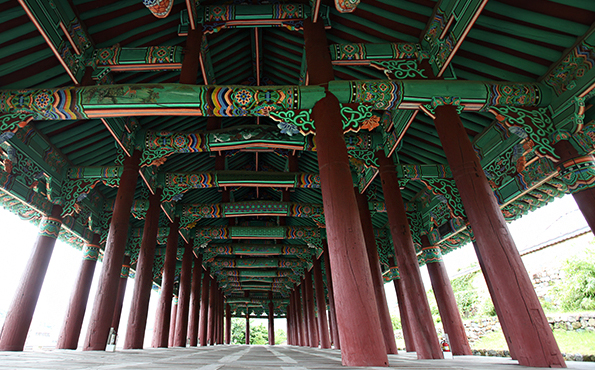
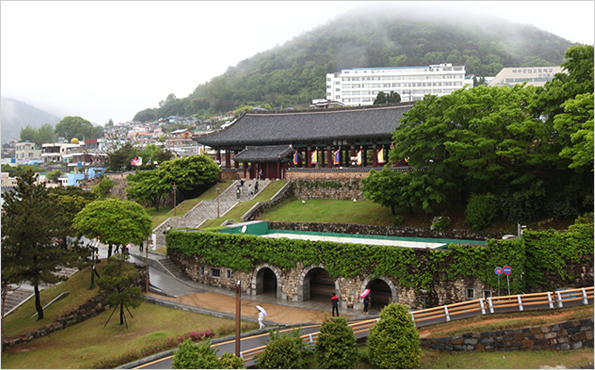
Designated as National Treasure number 304
The stone statue in the Jinnamgwan yard is also famous.
It is a person made of rocks. Yeosu is not only famous for being a ferocious battlefield for the navy in the Japanese invasion of Korea in 1592, but also because there are many remains of Admiral Yi Sun-sin who was a Jeolla Jwasuyeong: This is yet another one of those ruins. From the story told, during the Japanese invasion of Korea in 1592, while Admiral Yi Sun-sin was busy making Geobukseon (the Turtle Ship), the attack of the Japanese became fiercer. To block that, he has made 7 stone men and stood them up like people, and thus fooled the enemy, and leading the war to victory in the end.
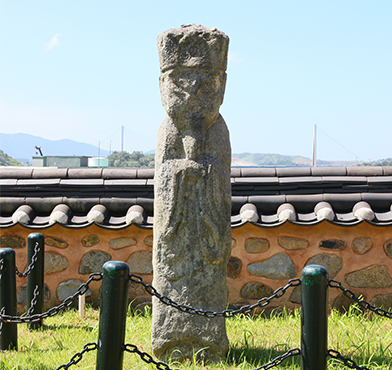

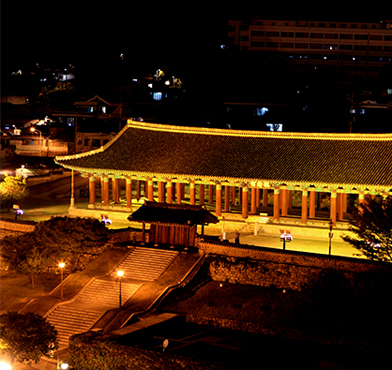
From the original seven, this is the only one remaining. It has a hood on its head, has its harms crossed, and has clothing on top of it. It looks as if it is looking at the enemy serenely. Although it is just a mere legend, it is an important cultural asset related to the Japanese invasion of Korea in 1592.
- last update 2019.04.01
- hits 0

